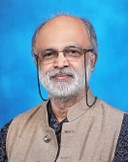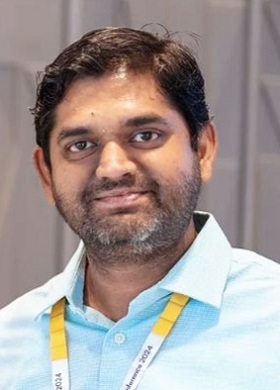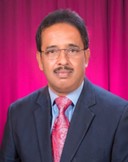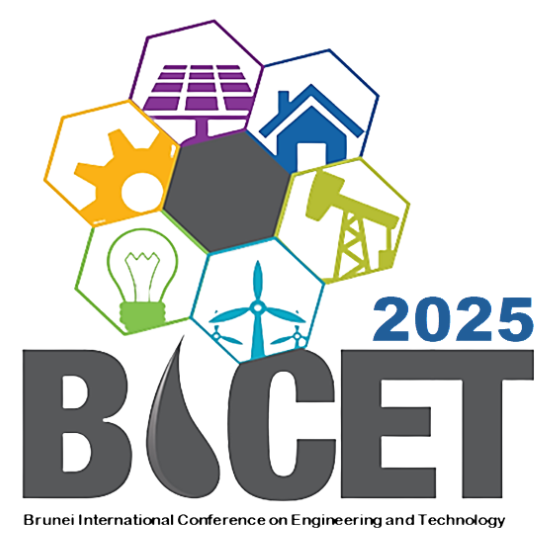Dr. Monzur Imteaz
Head of the Urban Environmental & Transport Systems at Swinburne University of Technology, Melbourne
 Dr. Monzur Imteaz is a Professor and Head of the Urban Environmental & Transport Systems at Swinburne University of Technology, Melbourne. After completion of his Ph.D. in 1997 from Saitama University (Japan), he was engaged as post-doctoral researcher at Queensland University of Technology and University of Queensland in Australia. Since 2007, he has been teaching at Swinburne University of Technology, Melbourne. To date, he is the author of 1 book, 1 edited book, 23 book chapters, 211 journals and 117 conference papers. Also, to date, he has successfully supervised 22 PhD students to completions. As per 2022 & 2023 citation records, he is among top 1% most-cited scientists in the world in the field of "Environmental Engineering". He has been serving as an editorial board member for the renowned journals; “Resources, Conservation & Recycling” and “Journal of Hydroinformatics”.
Dr. Monzur Imteaz is a Professor and Head of the Urban Environmental & Transport Systems at Swinburne University of Technology, Melbourne. After completion of his Ph.D. in 1997 from Saitama University (Japan), he was engaged as post-doctoral researcher at Queensland University of Technology and University of Queensland in Australia. Since 2007, he has been teaching at Swinburne University of Technology, Melbourne. To date, he is the author of 1 book, 1 edited book, 23 book chapters, 211 journals and 117 conference papers. Also, to date, he has successfully supervised 22 PhD students to completions. As per 2022 & 2023 citation records, he is among top 1% most-cited scientists in the world in the field of "Environmental Engineering". He has been serving as an editorial board member for the renowned journals; “Resources, Conservation & Recycling” and “Journal of Hydroinformatics”.
WATER RECYCLING, STORMWATER HARVESTING, DESALINATION: WHERE TO START?
ABSTRACT
With ever-increasing populations and impacts of climate change, water supply systems in many cities of the world are under tremendous stress. Water authorities in many major cities around the world are struggling to maintain required water demand. Available potable water supply is crucial in many megacities, and relevant water authorities are facing challenges to tackle demands. Many developed countries are utilising desalination plants, which are cost-intensive and out of reach for developing countries. Nonetheless, due to a lack of other prime water sources, desalination plants are unavoidable for Middle Eastern countries. Different parts of the world use a cheap, small-scale fog-collection system that does not require higher-level treatment. However, it largely depends on the hilly area and season, and the potential yield is tiny. Another cheap technology is ‘solar still’, water from which does not require any treatment. Again, the effectiveness of this technology largely depends on sunlight, and the production rate is also very low. This technology is primarily suitable for remote communities or for providing short-term water supply during and after natural disasters. A recent alternative, ‘grey water recycling’, is being used in many countries, where some portion of domestic used water is reused for non-potable purposes after some basic treatment. Multi-storey residential buildings can effectively implement the same concept. In general, treatment cost for this system is low; however, it requires special plumbing fixtures as well as training for the users to be able to maintain the system. The payback period for the installation costs of this system largely depends on the price of water. Another suitable option is centralised ‘recycled wastewater’, where wastewater is collected from a large area and, after secondary treatment, supplied to the residents through a separate pipe system for non-potable purposes, which eventually requires a very high initial cost. Some cities around the world collect wastewater from sewer systems, treat it to the highest level, and then supply it to residents as potable water; however, this practice has caused dissatisfaction among some consumers. These sorts of centralised recycling systems might be feasible, considering their long-term benefits and returns. Among all the alternative water sources, rainwater harvesting has received the most attention because it is cheap, has fewer safety concerns, and is easy to maintain. Obviously, there is no single universal solution; each of the above-mentioned options may or may not be feasible for a particular region. Individual life cycle costing and payback period analysis are required before adopting such options. The speech will highlight all these options and associated concerns.
Dr. R. Vinu
Chemical Engineering department at Indian Institute of Technology, IIT Madras, Chennai
 Dr. R. Vinu is currently a Professor in Chemical Engineering department at Indian Institute of Technology, IIT Madras, Chennai. He obtained Ph.D. in Chemical Engineering from Indian Institute of Science, Bangalore, in 2010. Prior to joining IIT Madras in 2012, he was a postdoctoral researcher in Northwestern University, USA. At IIT Madras, he leads an active research group that focuses on thermochemical and catalytic conversion of a diverse feedstocks such as biomass, waste plastics, algae, municipal solid wastes and coals to sustainable fuels, chemicals and materials. He is also the Director & Co-founder of the deep tech start-up company, X2Fuels & Energy Pvt. Ltd., incubated at IIT Madras Research Park, that focuses on the conversion of industrial and municipal wastes to fuels through hydrothermal liquefaction process to refinery blendstocks.
Dr. R. Vinu is currently a Professor in Chemical Engineering department at Indian Institute of Technology, IIT Madras, Chennai. He obtained Ph.D. in Chemical Engineering from Indian Institute of Science, Bangalore, in 2010. Prior to joining IIT Madras in 2012, he was a postdoctoral researcher in Northwestern University, USA. At IIT Madras, he leads an active research group that focuses on thermochemical and catalytic conversion of a diverse feedstocks such as biomass, waste plastics, algae, municipal solid wastes and coals to sustainable fuels, chemicals and materials. He is also the Director & Co-founder of the deep tech start-up company, X2Fuels & Energy Pvt. Ltd., incubated at IIT Madras Research Park, that focuses on the conversion of industrial and municipal wastes to fuels through hydrothermal liquefaction process to refinery blendstocks.
He has executed many important applied and scientific projects of relevance particularly to the industries such as Shell, Exxon Mobil, Thermax, Tata Steel, Valmet, Sea6Energy, Gas Authority of India Ltd. (GAIL), Chennai Petroleum Corporation Ltd. (CPCL), Hindustan Petroleum Corporation Ltd. (HPCL), Bharat Heavy Electricals Ltd. (BHEL), Manali Petrochemicals Ltd. and Renault Nissan.
He has published 150+ research articles in reputed journals, 10+ book chapters, an edited book and 5 patents, with a h-index of 51. He is the recipient of Young Engineer Award of the Institute of Engineers India (IEI), Young Scientist & Young Associate Awards of the Indian National Science Academy (INSA), National Academy of Sciences India (NASI), Indian Academy of Sciences (IAS), Institute of Chemical Technology (ICT) Mumbai, and Early Career Recognition Awards for Teaching and Research from IIT Madras. He serves as one of the Editors of Journal of Analytical and Applied Pyrolysis, and in the Editorial boards of Biomass & Bioenergy, Scientific Reports, and Frontiers in Fuels.
THERMOCATALYTIC CONVERSION OF BIOMASS TO BIOFUELS AND PHENOLS: A CIRCULAR ECONOMY APPROACH TO RENEWABLE CARBON UTILIZATION
ABSTRACT
The extensive and exhaustive use of fossil fuels to meet our daily energy, fuel and material needs contributes to climate change and poses a threat to sustainability. Net zero goals aim to close the CO2 cycle and minimize greenhouse gas emissions, while attempting to keep the global average temperature rise within 1.5oC. This requires significant strides to derive energy, fuels and materials from alternate and sustainable resources like biomass. Second generation (2G) lignocellulosic biomass agri-residues can be converted to liquid biofuels like bioethanol, biodiesel, bio-crude oils, solid biochar and gaseous fuels like syn-gas and bio-gas by adopting various thermochemical and biochemical processes. The processes can be broadly grouped into biochemical and thermochemical platforms. Of all the technologies, bioethanol production through 1G and 2G processes is commercialized, while the thermochemical processes are at various stages of TRL (Technology Readiness Levels).
In this presentation, different low carbon thermochemical technologies like pyrolysis, hydrothermal liquefaction (HTL) and catalytic hydrogenolysis/ hydrodeoxygenation (HDO) to convert lignocellulosic biomass to chemicals (like phenols), fuels and multivarious bioproducts will be discussed from a circular economy perspective. Emphasis will be given to complete valorization of even the by-products like lignin and tarry fractions for the technoeconomic feasibility of a biorefinery. The specific examples from our research group that will be discussed include, (a) catalyst development and mechanistic understanding of lignin to C9 monomeric phenols, (b) reductive catalytic fractionation of biomass to convert lignin to phenols through a “lignin-first” approach, (c) catalytic HDO of bio-crude oils to hydrocarbon fuels, and (d) HTL as an alternative to pyrolysis for making stable and energy-rich bio-crude oils.
Sharul Kamal Abdul Rahim,
Wireless Communication Centre (WCC) at UTM

Biography
Sharul Kamal Abdul Rahim, obtained his first degree in Electrical Engineering from the University of Tennessee, USA. Building on this foundation, he earned his MSc in Communication Engineering from Universiti Teknologi Malaysia (UTM) and later pursued a PhD in Wireless Communication System at the University of Birmingham, UK, completing his doctoral studies in 2007. Since 2001, he has been with the Wireless Communication Centre (WCC) at UTM, a distinguished High Centre of Excellence (HICOE). His journey in academia follows a successful stint in the industry, where he garnered three years of practical experience before joining WCC. He achieved the rank of Associate Professor in 2010 and was subsequently promoted to the position of Professor in 2017. His research focus encompasses Antenna Design, Smart Antenna Systems, and Beamforming Network communication. He holds an H-Index of 33 according to SCOPUS, with over 4320 citations. He has authored 21 books and book chapters and has published more than 280 technical papers in reputable journals and proceedings, including IEEE Trans. on Antenna and Propagation (TAP), IEEE Antennas and Wireless Propagation Letter (AWPL), IEEE Antenna Magazine, IEEE Access, and Electronics Letters. He has secured more than 41 research grants both internationally and nationally, leading as the head of various projects. His innovative work is further reflected in 11 granted patents and over 15 copyrights.
BEAMFORMING AND ANTENNA ARRAYS FOR SMART CITY COMMUNICATION SYSTEMS
ABSTRACT
The advancement of smart city infrastructure relies heavily on efficient and high-performance wireless communication systems. Antennas and beamforming technologies play an important role in enabling seamless connectivity, supporting applications such as intelligent transportation, public safety, and large-scale IoT deployments. This keynote explores innovative antenna systems and beamforming networks, with a focus on switched beamforming using Butler Matrix configurations, adaptive beamforming algorithms, and array antenna designs suitable for integration in urban environments. The implementation of these technologies enhances signal quality, increases spectral efficiency, and reduces interference in dense city landscapes. A key application highlighted is the deployment of an IoT-based bus tracking system using Bluetooth Low Energy (BLE) proximity beacons, enabling real-time data analytics and improved public transport services. Machine learning models, were used to predict bus arrival times, demonstrating the synergy between hardware and data-driven solutions in smart city ecosystems. Research and deployment were carried out in Malaysia and Indonesia, illustrating practical outcomes and collaborative innovation. This work showcases how advanced antenna design, combined with intelligent signal processing and analytics, contributes to the realization of responsive communication infrastructure in the context of smart cities.
Dr. Wayne NP Hung
Department of Engineering Technology & Industrial Distribution of Texas A&M University in Texas, USA.

Biography
Dr. Wayne NP Hung is a Professor, Program Coordinator, and Faculty Fellow at the Department of Engineering Technology & Industrial Distribution of Texas A&M University in Texas, USA. Dr. Hung obtained his BS and MS degrees in Mechanical Engineering from University of Michigan in Ann Arbor, and his PhD degree in the same field from University of California in Berkeley. He had 12 years of international industry experience before pursuing his academic career. He teaches and researches in the field of advanced manufacturing and materials, collaborates internationally with companies and institutions in Malaysia, Singapore, Vietnam, Mexico, Brazil, Belgium, and France. Dr. Hung owns one patent, is the recipient of the departmental Excellent Teaching award, Research Excellent award, and Distinguished Faculty Advisor award from Society of Manufacturing Engineers. Dr. Hung and his collaborators have published 6 book-chapters, and more than 230 educational and technical articles
METAL ADDITIVE MANUFACTURING: CHALLENGES AND OPPORTUNITIES
ABSTRACT
Additive manufacturing started as a rapid prototyping tool. The evolution of this technique replaced the original materials such as paper or polymers with engineering metals and has been implemented in industries. Commercial metal additive manufacturing (MAM) techniques include direct energy deposition, binder jetting, powder bed fusion, wire arc additive manufacturing, and cold-spray additive manufacturing. Although MAM can produce near net shaped components, the resulted surface and volume defects hinder the full-scale implementation of MAM due to concerns with high production cost, part accuracy, repeatability, and reliability. This paper reviews the challenges of MAM and remedial opportunities to improve the overall process from part design to final components.
